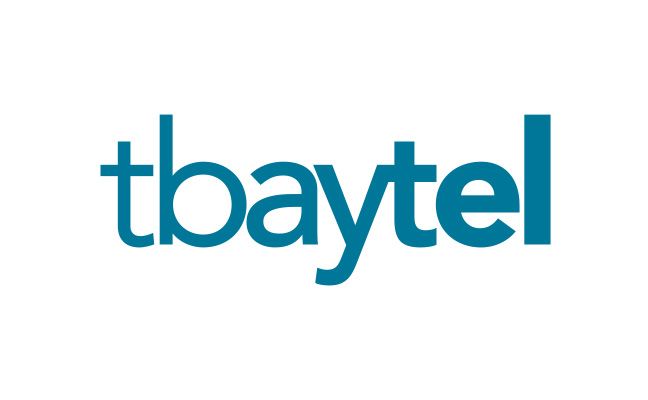Data transformed, insights ignited
Simplify data complexity to drive impact, with CXone. Easily drag and drop real-time and historical widgets to customize your dashboard. Leverage hundreds of pre-built reports and metrics to seamlessly unlock vital contact center insights.
Take action, instantly
Track operational and performance metrics with dashboard widgets providing real-time, actionable information across a wide range of roles.
Identify trends
Set KPI thresholds for excellence, and then easily pinpoint anomalies and trends, continuously optimizing for success.
Provide transparency
Easily and securely share actionable information throughout your business.
Create one source of truth
Leverage cross-domain information from across the CXone suite and all levels of the organization, to tell your unique story.
“Insights from CXone Reporting have allowed for scheduling enhancements that reduce idle time and enable assignment of deferrable work.”
Cosimo Valente
Manager, Customer Care Center
Tbaytel
Contact Center Reporting - Optimize Your CX: FAQs
{"@context":"https://schema.org","@type":"FAQPage","mainEntity":[{"@type":"Question","name":"What is CXone Reporting?","acceptedAnswer":{"@type":"Answer","text":"\u003cp\u003eCXone Reporting is a comprehensive business intelligence and reporting tool that provides real-time and historical insights on your contact center\u0026rsquo;s key business metrics and trends through fully integrated reporting and data access tools. It helps guide smarter, more informed decisions for contact centers and customer experience management.\u003c/p\u003e"}},{"@type":"Question","name":"What types of reports can I generate with CXone Reporting?","acceptedAnswer":{"@type":"Answer","text":"\u003cp\u003eUsing CXone reporting, you can use the following types of reports:\u003c/p\u003e\n\u003col\u003e\n \u003cli\u003ePrebuilt Reports: A set of BI reports available out of the box, which allows users to view insights with multiple use cases like agent lists, skill lists, contact history, team evaluations, agent adherence, etc.\n \u003cul\u003e\n \u003cli\u003eStandard Reports: System reports providing insights into common metrics and performance indicators. These are ready to use without any configuration.\u003c/li\u003e\n \u003cli\u003eBI Reports: Business Intelligence (BI) reports that integrate with BI tools for advanced data visualization and analysis. They offer deeper insights and support strategic decision-making with comprehensive data views.\u003c/li\u003e\n \u003c/ul\u003e\n \u003c/li\u003e\n \u003cli\u003eCustom Reports: Tailored to specific business needs, allowing the selection of metrics, filters, and formats to match unique requirements. Users can design these reports from scratch for personalized insights.\u003c/li\u003e\n \u003cli\u003eData Download Reports: Focused on exporting raw data for detailed analysis using external tools. These reports are ideal for extensive data manipulation and custom analyses\u003c/li\u003e\n\u003c/ol\u003e"}},{"@type":"Question","name":"How do I access CXone Reporting?","acceptedAnswer":{"@type":"Answer","text":"\u003cp\u003eTo access CXone Reporting, follow these steps:\u003c/p\u003e\n\u003col\u003e\n \u003cli\u003eLog in to your CXone account.\u003c/li\u003e\n \u003cli\u003eNavigate to the \u0026ldquo;Reporting\u0026rdquo; section from the main menu.\u003c/li\u003e\n \u003cli\u003eChoose the type of report you want to create or view.\u003c/li\u003e\n\u003c/ol\u003e"}},{"@type":"Question","name":"How can I schedule automatic report generation?","acceptedAnswer":{"@type":"Answer","text":"\u003cp\u003eTo schedule automatic report generation:\u003c/p\u003e\n\u003cul\u003e\n \u003cli\u003eCreate a custom report or select an existing report you want to schedule\u003c/li\u003e\n \u003cli\u003eLook for an option to \u0022Schedule\u0022 or \u0022Create Schedule\u0022 for that report\u003c/li\u003e\n \u003cli\u003eConfigure the schedule settings, including:\n \u003cul\u003e\n \u003cli\u003eFrequency (daily, weekly, monthly, etc.)\u003c/li\u003e\n \u003cli\u003eTime to run\u003c/li\u003e\n \u003cli\u003eReport format (PDF, Excel, etc.)\u003c/li\u003e\n \u003cli\u003eRecipients to email the report to\u003c/li\u003e\n \u003c/ul\u003e\n \u003c/li\u003e\n \u003cli\u003eSave the schedule\u003c/li\u003e\n\u003c/ul\u003e\n\u003cp\u003eThe report will then be automatically generated and distributed based on your configured schedule.\u003c/p\u003e"}},{"@type":"Question","name":"How do I export reports from CXone Reporting?","acceptedAnswer":{"@type":"Answer","text":"\u003cp\u003eThere are two ways data can be exported from CXone Reporting.\u003c/p\u003e\n\u003cp\u003e1. Data extraction from BI reports:\u003c/p\u003e\n\u003cp\u003eYou can export data from entire BI reports or from individual widgets within reports. Being able to easily share data within your contact center is crucial for maintaining transparency and visibility across teams, ultimately leading to better decision-making and improved performance. Here\u0027s how to export BI reports:\u003c/p\u003e\n\u003cp\u003eExport Report Data:\u003c/p\u003e\n\u003cul\u003e\n \u003cli\u003eClick the Share icon (box with an arrow pointing out) in the top right corner of the report.\u003c/li\u003e\n \u003cli\u003eSelect \u0022Export to Excel\u0022 or \u0022Export to PDF\u0022.\u003c/li\u003e\n \u003cli\u003eChoose your desired Range and Contents from the drop-downs.\u003c/li\u003e\n \u003cli\u003eFor PDF exports, use the More Settings drop-down to configure Paper Size, Orientation, and other Display Options.\u003c/li\u003e\n \u003cli\u003eClick Export.\u003c/li\u003e\n\u003c/ul\u003e\n\u003cp\u003eExport Widget Data:\u003c/p\u003e\n\u003cul\u003e\n \u003cli\u003eHover over the widget you want to export.\u003c/li\u003e\n \u003cli\u003eClick the Options icon (three stacked dots) in the top right corner.\u003c/li\u003e\n \u003cli\u003eSelect Export, then choose PDF or Data (which generates an Excel spreadsheet).\u003c/li\u003e\n \u003cli\u003eFor PDF exports, configure the Paper Size, Orientation, and other Display Options.\u003c/li\u003e\n \u003cli\u003eClick Export.\u003c/li\u003e\n\u003c/ul\u003e\n\u003cp\u003eThese options allow you to flexibly export either entire reports or specific data points as needed, ensuring that valuable insights can be shared efficiently throughout your organization.\u003c/p\u003e\n\u003cp\u003e2. ACD Data Download:\u003c/p\u003e\n\u003cp\u003eYou can export the Dataware house sourced report templates using the ACD Data Download.\u003c/p\u003e\n\u003cp\u003eExport Report Data:\u003c/p\u003e\n\u003cul\u003e\n \u003cli\u003eClick on the Data Download option in ACD Data Download.\u003c/li\u003e\n \u003cli\u003eSearch for the report from the list that you would like to download.\u003c/li\u003e\n \u003cli\u003eSelect the data range and export option in which you want to download the report.\u003c/li\u003e\n\u003c/ul\u003e"}},{"@type":"Question","name":"How can I share reports with my team?","acceptedAnswer":{"@type":"Answer","text":"\u003cp\u003eIn addition to exporting the reports and sending them to your teammates, you can also share reports with your team by subscribing to BI reports. This allows you to automate the sharing of report data on a consistent schedule, saving you time and ensuring everyone stays informed. Here\u0027s how:\u003c/p\u003e\n\u003cp\u003e1. Create a Subscription:\u003c/p\u003e\n\u003cul\u003e\n \u003cli\u003eGo to Reporting \u0026gt; Prebuilt Reports.\u003c/li\u003e\n \u003cli\u003eSelect the report you want to subscribe to and run it.\u003c/li\u003e\n \u003cli\u003eClick the Share icon (box with a blue arrow) and select \u0022Subscribe to Dossier.\u0022\u003c/li\u003e\n \u003cli\u003eEnter a Name for the subscription.\u003c/li\u003e\n \u003cli\u003eOptionally, save the current view as a Bookmark./li\u0026gt;\n \u003c/li\u003e\n \u003cli\u003eSelect a Format (Excel or PDF) and configure any additional settings.\u003c/li\u003e\n \u003cli\u003eChoose a Schedule (default or custom).\u003c/li\u003e\n \u003cli\u003eEnter the email addresses of the recipients.\u003c/li\u003e\n \u003cli\u003eClick \u0022Subscribe.\u0022\u003c/li\u003e\n\u003c/ul\u003e\n\u003cp\u003e2. You can even create custom schedules for these automated reports:\u003c/p\u003e\n\u003cul\u003e\n \u003cli\u003eGo to Reporting \u0026gt; Schedules.\u003c/li\u003e\n \u003cli\u003eClick \u0022Create Schedule.\u0022\u003c/li\u003e\n \u003cli\u003eEnter a Name, select Recurrence, Start Date, and End Date.\u003c/li\u003e\n \u003cli\u003eClick \u0022Create.\u0022\u003c/li\u003e\n\u003c/ul\u003e"}},{"@type":"Question","name":"What should I do if my data isn’t appearing correctly in the reports?","acceptedAnswer":{"@type":"Answer","text":"\u003cp\u003eIf your data isn\u0027t appearing correctly in CXone reporting, you should check the following:\u003c/p\u003e\n\u003col\u003e\n \u003cli\u003eTime Zone Settings: Ensure the correct time zone is set for your business unit or user. For BI reports, this is not applicable.\u003c/li\u003e\n \u003cli\u003eReport Type and Metrics: Verify that the metrics are correctly defined and applied.\u003c/li\u003e\n \u003cli\u003eDaylight Saving Time: Adjust for DST if applicable.\u003c/li\u003e\n \u003cli\u003eCustom Report Settings: Check if the custom report displays in the intended time zone.\u003c/li\u003e\n\u003c/ol\u003e\n\u003cp\u003eFor more detailed troubleshooting, visit the \u003ca href=\u0022https://help.nice-incontact.com/content/reporting/reporting.htm?tocpath=Reporting%7CReporting%7C_____0\u0022\u003eCXone Reporting Help Center\u003c/a\u003e.\u003c/p\u003e"}},{"@type":"Question","name":"Can I control user access and permissions within CXone Reporting?","acceptedAnswer":{"@type":"Answer","text":"\u003cp\u003eYes, you can control user access and permissions within CXone Reporting. This involves setting up user roles and permissions to ensure that only authorized users can access specific reports and data. You can define these roles and permissions in the administration settings of CXone.\u003c/p\u003e"}}]}
What is CXone Reporting?
CXone Reporting is a comprehensive business intelligence and reporting tool that provides real-time and historical insights on your contact center’s key business metrics and trends through fully integrated reporting and data access tools. It helps guide smarter, more informed decisions for contact centers and customer experience management.
What types of reports can I generate with CXone Reporting?
Using CXone reporting, you can use the following types of reports:
- Prebuilt Reports: A set of BI reports available out of the box, which allows users to view insights with multiple use cases like agent lists, skill lists, contact history, team evaluations, agent adherence, etc.
- Standard Reports: System reports providing insights into common metrics and performance indicators. These are ready to use without any configuration.
- BI Reports: Business Intelligence (BI) reports that integrate with BI tools for advanced data visualization and analysis. They offer deeper insights and support strategic decision-making with comprehensive data views.
- Custom Reports: Tailored to specific business needs, allowing the selection of metrics, filters, and formats to match unique requirements. Users can design these reports from scratch for personalized insights.
- Data Download Reports: Focused on exporting raw data for detailed analysis using external tools. These reports are ideal for extensive data manipulation and custom analyses
How do I access CXone Reporting?
To access CXone Reporting, follow these steps:
- Log in to your CXone account.
- Navigate to the “Reporting” section from the main menu.
- Choose the type of report you want to create or view.
How can I schedule automatic report generation?
To schedule automatic report generation:
- Create a custom report or select an existing report you want to schedule
- Look for an option to "Schedule" or "Create Schedule" for that report
- Configure the schedule settings, including:
- Frequency (daily, weekly, monthly, etc.)
- Time to run
- Report format (PDF, Excel, etc.)
- Recipients to email the report to
- Save the schedule
The report will then be automatically generated and distributed based on your configured schedule.
How do I export reports from CXone Reporting?
There are two ways data can be exported from CXone Reporting.
1. Data extraction from BI reports:
You can export data from entire BI reports or from individual widgets within reports. Being able to easily share data within your contact center is crucial for maintaining transparency and visibility across teams, ultimately leading to better decision-making and improved performance. Here's how to export BI reports:
Export Report Data:
- Click the Share icon (box with an arrow pointing out) in the top right corner of the report.
- Select "Export to Excel" or "Export to PDF".
- Choose your desired Range and Contents from the drop-downs.
- For PDF exports, use the More Settings drop-down to configure Paper Size, Orientation, and other Display Options.
- Click Export.
Export Widget Data:
- Hover over the widget you want to export.
- Click the Options icon (three stacked dots) in the top right corner.
- Select Export, then choose PDF or Data (which generates an Excel spreadsheet).
- For PDF exports, configure the Paper Size, Orientation, and other Display Options.
- Click Export.
These options allow you to flexibly export either entire reports or specific data points as needed, ensuring that valuable insights can be shared efficiently throughout your organization.
2. ACD Data Download:
You can export the Dataware house sourced report templates using the ACD Data Download.
Export Report Data:
- Click on the Data Download option in ACD Data Download.
- Search for the report from the list that you would like to download.
- Select the data range and export option in which you want to download the report.
How can I share reports with my team?
In addition to exporting the reports and sending them to your teammates, you can also share reports with your team by subscribing to BI reports. This allows you to automate the sharing of report data on a consistent schedule, saving you time and ensuring everyone stays informed. Here's how:
1. Create a Subscription:
- Go to Reporting > Prebuilt Reports.
- Select the report you want to subscribe to and run it.
- Click the Share icon (box with a blue arrow) and select "Subscribe to Dossier."
- Enter a Name for the subscription.
- Optionally, save the current view as a Bookmark./li>
- Select a Format (Excel or PDF) and configure any additional settings.
- Choose a Schedule (default or custom).
- Enter the email addresses of the recipients.
- Click "Subscribe."
2. You can even create custom schedules for these automated reports:
- Go to Reporting > Schedules.
- Click "Create Schedule."
- Enter a Name, select Recurrence, Start Date, and End Date.
- Click "Create."
What should I do if my data isn’t appearing correctly in the reports?
If your data isn't appearing correctly in CXone reporting, you should check the following:
- Time Zone Settings: Ensure the correct time zone is set for your business unit or user. For BI reports, this is not applicable.
- Report Type and Metrics: Verify that the metrics are correctly defined and applied.
- Daylight Saving Time: Adjust for DST if applicable.
- Custom Report Settings: Check if the custom report displays in the intended time zone.
For more detailed troubleshooting, visit the CXone Reporting Help Center.
Can I control user access and permissions within CXone Reporting?
Yes, you can control user access and permissions within CXone Reporting. This involves setting up user roles and permissions to ensure that only authorized users can access specific reports and data. You can define these roles and permissions in the administration settings of CXone.










